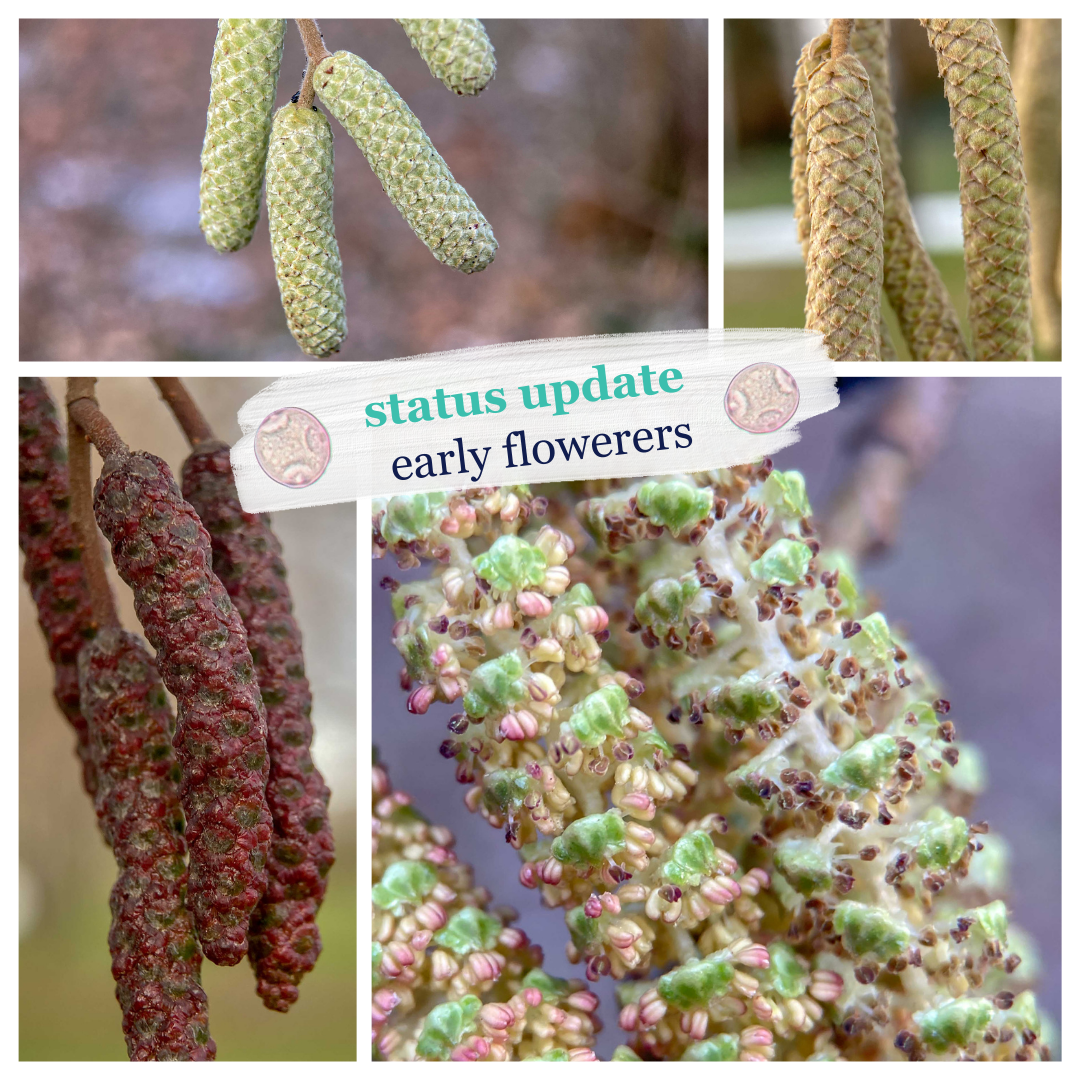We provide here pollen forecasts and recommendations, that are based on our scientifically evaluated data and our expertise. It is our aim to inform persons concerned by pollen allergies in Vienna in a most comprehensive, accurate way and free of charge.
Current pollination
LEGEND

Photo: The catkins of the purple alder are flowering and some have already faded (bottom right). The catkins of the common hazel (top left), the Turkish hazel (top right), and the gray alder (bottom left) are still closed.
Mid- and long-term forecast for Vienna
This forecast gives you an overview for a longer time period so that you can improve your planning.
The cold front continues to prevent the release of pollen!
As forecasted, purple alder catkins began to flower in Vienna during Christmas week. The first catkins are already fading (see image). With the continuation of the cold front and winter conditions with temperatures around freezing, pollen release is unlikely in the coming days.
The purple alder (Alnus x spaethii) is a hybrid of Japanese and Caucasian alder that only occurs in areas where it is planted. It is so rare in Vienna that it does not cause any measurable pollen dispersal. We observe and report on its flowering with the help of phenology.
The common hazel, the Turkish hazel and the native alder species are still dormant and have not yet reached flowering stage.
The Pollenservice Vienna of the MedUni Vienna measures 365 days a year and observes the development of the vegetation continuously.
The GeoSphere Austria is our partner for weather forecasts and weather data. We are grateful for the professional interchange and the cooperation.